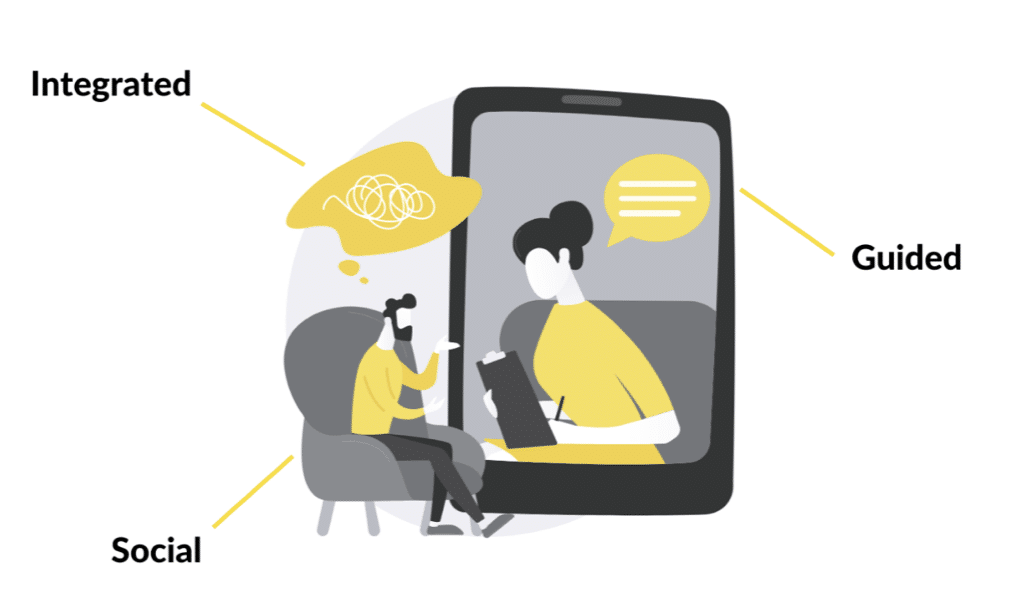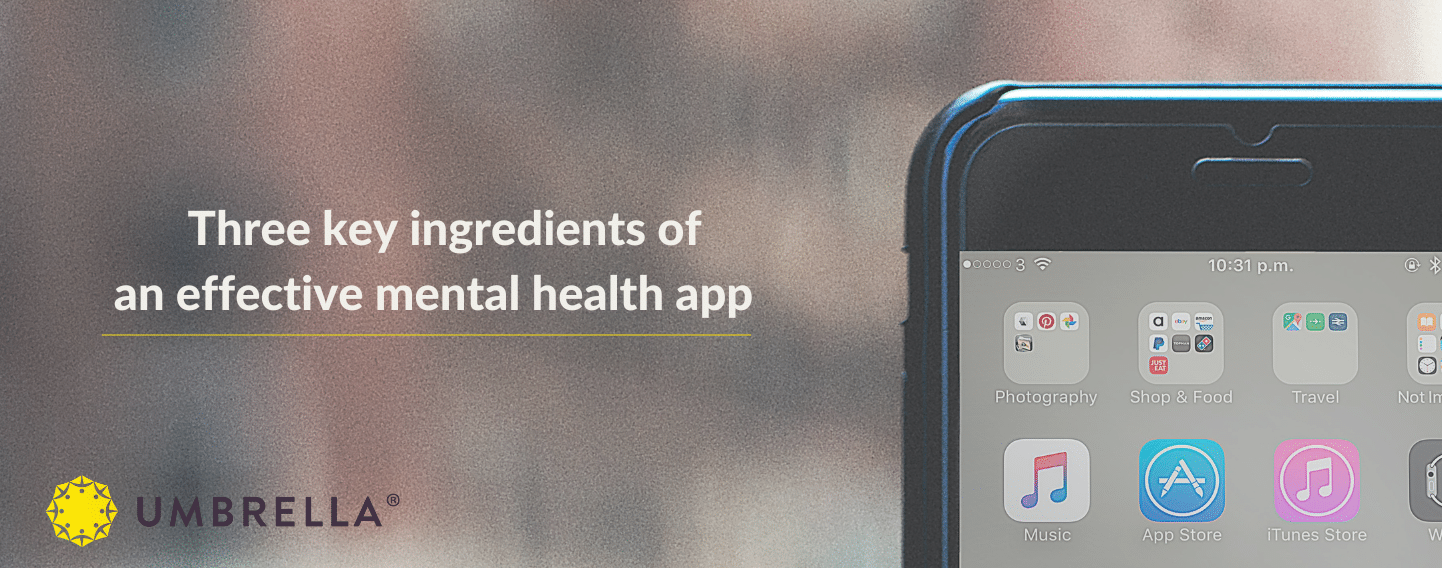The digital mental health space found its footing far before the COVID-19 pandemic, as the rise in mental health issues called for alternative treatment services.
As we’re all aware, the health system and its services are being stretched to their limits. There is growing research that suggests the COVID-19 pandemic has made accessing mental health support more challenging than ever.
Digital mental health interventions are often hailed as an innovative solution to transform the way healthcare can be delivered: in a non-intrusive, scalable, accessible, and cost-effective way.
Digital mental health interventions are delivered by technological means and can range from internet-based tools to mental health apps, chatbots, and even virtual reality, intended to assess and treat mental illnesses and boost wellbeing.
Think of that meditation app you downloaded over a year ago that you used a couple of times, before letting it collect virtual dust on your home screen. Of course, not all of us have let these healthy habit tools slip away – if it’s working for you, you’ll still be using it.
However, with so many digital mental health tools being developed, the bold claims and promises can often overshadow the need for such tools to be based on scientific evidence. Many of the popular digital mental health interventions we know today are not evidence-based or are not built with the core principles of behaviour change in mind.
In fact, a surprising statistic from a 2020 study found that from over 1,000 online wellness and stress management apps, only 2% had any research supporting them.
Tip: Our research team has found a helpful resource from a non-profit organisation that evaluates current mental health apps based on the strength of the scientific evidence that supports it, ease of use, and its privacy policies. Check out Psyberguide before committing to a new app.
This doesn’t mean it’s all doom and gloom. Like other face-to-face mental health interventions (such as resilience training and workshops), there are times when they work and when they don’t. (Have a read of this article on how we can truly benefit from training, by our Research Lead, Dr Amanda Wallis.)
Thankfully, researchers have done the hard yards for us when it comes to digital mental health interventions, too. Recently, many researchers have started identifying the key factors that make some mental health apps more effective than others.
Regardless of whether we are consumers or providers of these mental health tools, keeping these factors front of mind can ensure we are on the right path toward real, positive change.
- Integrated
Where mental health apps often go wrong is that they can be difficult to “integrate” into our wider ecosystem of wellbeing support. While apps can be used as part of the solution, they shouldn’t be viewed as the whole solution, and they are not a panacea for workplace wellbeing issues.
Instead of these interventions being one-off solutions to our problems, we must find ways to integrate these new tools within our wider wellbeing plans. Doing this enhances our level of engagement with such tools, along with how likely we are to continue using them.
Take, for example, a company with poor leadership where employees are experiencing severe levels of burnout and stress. This company offers their people a flashy mental health app and tells them to “sort themselves out”. Without real culture change, merely providing an app won’t solve this company’s fundamental organisational problems.
Similarly, as individuals, sometimes things in our environment can make using apps more challenging; for example, finding a quiet place to meditate if you share a house or workplace with lots of people.
Because of this, we need to be more mindful of how digital solutions might fit into our wider plans when it comes to enhancing our wellbeing, and more intentional in their use. Consider coming up with a strategy, identifying what other tools you can use as part of your wellbeing plan, and what actions you can do habitually to maintain your wellbeing.
- Guided
A given with mental health apps is that they often remove the human element of traditional therapy. We know from decades of research that feeling heard, knowing someone “gets” you, and having a trusting relationship with a therapist is crucial to mental health improvement. So, how can apps and online tools mimic these key ingredients in mental health support?
Like having a close friend you go to for support, a caregiver dear to you, or a therapist you can rely on, the people in your support system are not always there to give you the answers but rather provide comfort or guidance on where to go next. Effective mental health apps are those that incorporate “guidance”.
For example, they may have channels to contact a human therapist, a step-by-step process to follow so you don’t get lost, or automated reminders to practise some strategies you recently learnt. These fundamental features emulate components of face-to-face therapy by creating accountability and feedback systems that help foster motivation.
- Social
Lastly, researchers have identified the “social” aspect as another key factor in mental health apps; that is, how the app allows people to connect with others. It also means adopting a collective approach to wellbeing rather than viewing it as an individual journey.
“Humans are social beings, and we are happier, and better, when connected to others.”
– Paul Bloom, PhD
Keep an eye out for apps with a social component. These have been found to produce greater benefits in improving mood and in combating stress and depressive symptoms. Social components can include having online group chats, bulletins, calling functions, or email options for virtual social support.
This is also the reason why “blended learning” programmes have been quite successful in recent years. Blended learning is where traditional teaching methods (e.g., in-class, instructor-led) are combined with eLearning content (e.g., tutorials, videos, quizzes).
Often, blended learning complements digital solutions with group-based or cohort learning, which gives learners the guidance and interaction of an in-person experience along with the flexibility of learning independently.
Benefits of blended learning are that it is:
- accessible
- flexible
- personalised (you learn at your own pace)
- can increase knowledge retention
- can increase engagement
- cost-effective.

The main thing we should remember is that there isn’t a one-size-fits-all solution to support our mental health journey. There’s still a lot more to be learnt about digital mental health, and different apps will have different tools, features, and exercises.
As you experiment, it may be worth noting what types of tools work best for you – so you can keep this in mind the next time you download a mental health app.
When searching for an effective app, remember to practise our big-picture thinking skills to shift toward a more holistic and collective approach when it comes to wellbeing. Think “IGS” – integrated, guided, and social.
Author: Erika Clarry, Research Assistant



